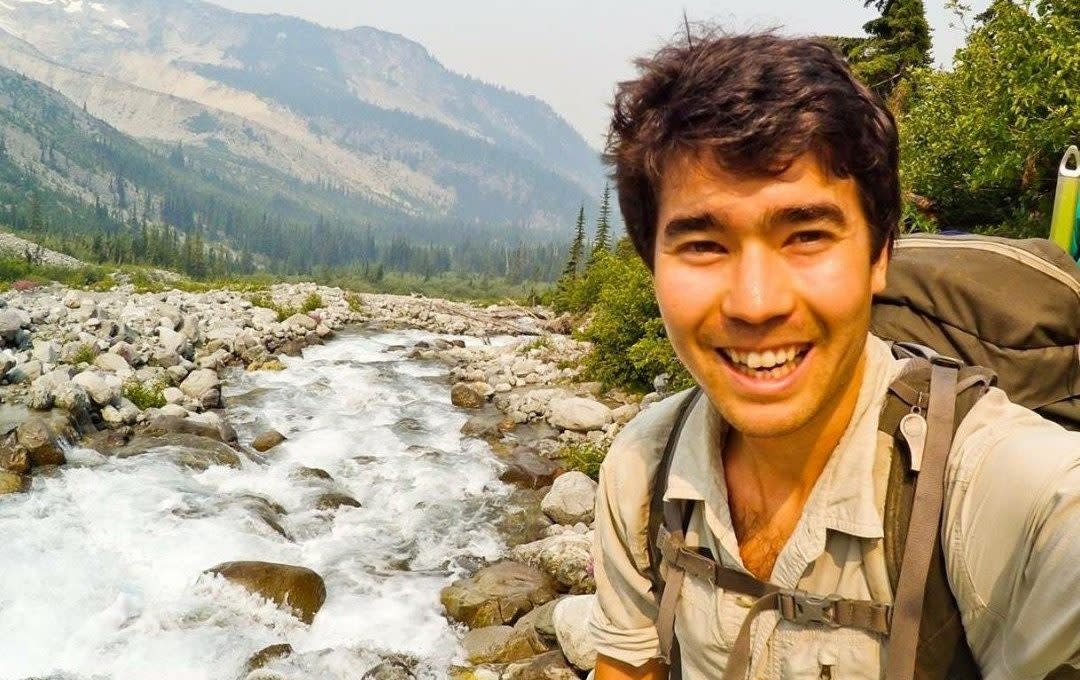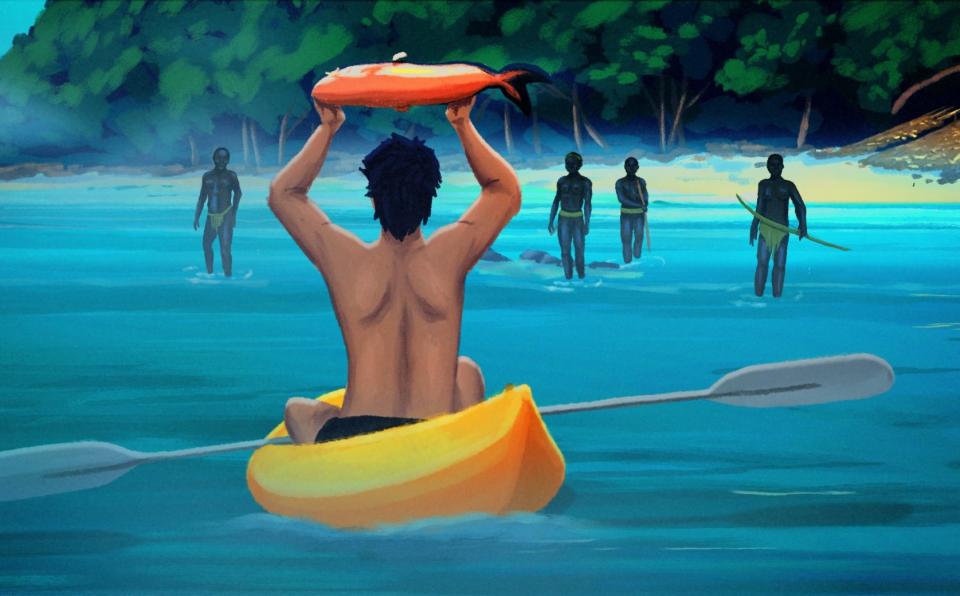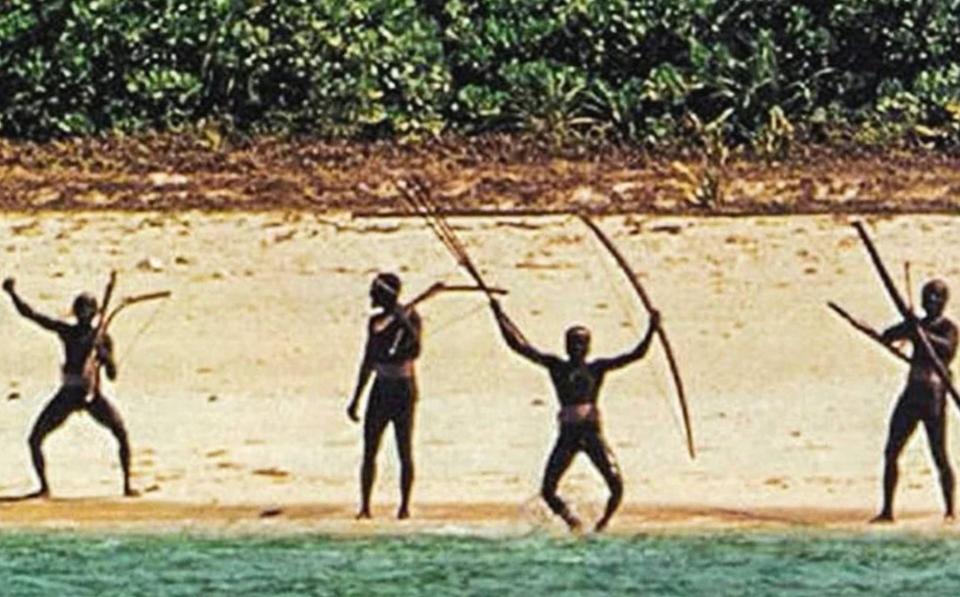‘He paid the ultimate price’: the grisly fate of the missionary who met the last ‘uncontacted’ tribe

On the morning of November 17, 2018, on the island of North Sentinel in the Indian Ocean, a man stepped from the sea. He was dressed only in shorts, shouting incomprehensibly and waving his arms violently. A sentry spotted him and warned him away.
The man came closer. His shouting grew more desperate, his gestures wilder. The sentry drew a bead on the man with his bow and arrow. The man stepped closer. The sentry fired.
The stranger in the surf was a 26-year-old American evangelical Christian missionary, John Allen Chau, who believed he was on a mission from God – “The Great Commission” – to convert the island’s inhabitants. The lookout on the beach was a member of the North Sentinelese, one of the last remaining “uncontacted” tribes in the world.
The group, which is perhaps 200-strong, appears to use only stone-age tools and technology. They defend their remote island – in the far-flung Andaman archipelago – aggressively. After the 2004 Boxing Day Tsunami, they shot at a reconnaissance helicopter; and they’ve been known to kill fishermen who’ve drunkenly washed up on their shores. In 2018, on Chau’s second approach to the community, they killed him – and found themselves at the centre of a global news storm.
Now Chau’s story has been turned into a film, The Mission, produced by National Geographic and directed by American documentarians, Amanda McBaine and Jesse Moss. It’s a disquieting, immersive investigation into faith, anthropology and the tug of remoteness and strangeness.
“The paradox of John was that he wasn’t stupid,” explains Moss. “He was very intelligent. He was methodical. We like to think of such people as zealots. But there’s a lot that was normal about him. Still, he concealed a lot.”
In some ways, Chau was a quintessential millennial. Born in 1991 in Scottsboro, Alabama, he grew up to be a keen outdoorsman, taking himself off for weeks-long solo hikes and documenting his adventures compulsively on social media. He even became a brand influencer for a beef jerky company.
Chau came from a moderate Christian family. But gradually, through his school, youth camps and undergraduate degree at Oral Roberts University, a private Christian institution, he fell under the sway of a more radical faith. He first heard about the North Sentinelese in his late teens and, about the same time, began to believe in the evangelical mission of bringing the Gospel to remote, isolated peoples.
“John subscribed to two faiths,” says McBaine. “There was his evangelical Christianity, but also his love of adventure, stories such as Tintin and Robinson Crusoe. He willed himself into being a storybook character, and he paid the ultimate price for it.”
North Sentinel itself has been buried under hundreds of years of mythmaking. In the Victorian era, the Andaman Islands – then part of the British Empire – gave rise to wild tales of cannibalistic pygmies. (In fact, there is no evidence its indigenous tribes ever practised cannibalism.) In the 1890 Sherlock Holmes novel The Sign of the Four, the murderer is aided in his plan of revenge by Tonga, a “black cannibal” islander. In the 20th century, the islands developed a new infamy as King Kong’s remote lair: a site of monstrous, animalistic terror.

Yet these stories disguised a darker history. The islands’ British governors, ruling from the provincial capital Port Blair, treated the indigenous peoples with a mix of condescension, fear and morbid fascination. One officer in particular, Maurice Vidal Portman, conducted a series of anthropological expeditions among the Andamanese in the late 1900s, living among some of them. But he also kidnapped children and tribespeople, taking them back to Port Blair and displaying them as curiosities. In the film, there’s an extraordinary archive interview with an Andaman tribesman who describes an evil spirit that steals from the water to eat children – the implication is that this is an ancestral memory of British incursions, translated into folklore.
“There were never any isolated communities on these islands,” Professor Vishvajit Pandya, an Indian anthropologist, tells me. “That’s the biggest myth. This idea that you can go off and discover an ‘uncontacted’ tribe [is] b–llshit. It’s the white man’s burden again and again.”
Pandya is perhaps the most foremost expert on Andaman Island tribes. In the 1980s, he was tasked by the Indian government, who now own the islands, to decide how to deal with its indigenous peoples. His approach – “eyes on, hands off” – has been official policy ever since. Chau broke international law by attempting to contact the North Sentinelese, bribing local fishermen to sneak past coast guard patrols and get him close to shore.
Pandya suspects a wider conspiracy: “How the hell did he get in there? How did he get past the Navy? John had this great romanticism. He saw himself as a great hero bringing the voice of Christ – I mean, get a life! Let’s treat human beings as human beings. This idea that these people live without a sense of history…”

In fact, Pandya points out, there is evidence the North Sentinelese once traded with their neighbours, and they seem to speak a similar language. It was only in the 19th- and 20th-centuries, when outside influence disrupted these historic exchanges, that they retreated and began to treat interlopers with hostility. “They may not be un-contacted, but they are unconquered,” says Pandya. “They have a right to their way of life.”
Still, for Chau, North Sentinel exerted a compulsive pull. “Satan has possession of these people and I am going to save them from eternal hellfire,” he promised in his diary.
Yet his naive, fatal radicalism didn’t develop in isolation. As The Mission makes clear, he was encouraged and sponsored by a vast, wealthy network of missionary organisations. In 2021, America sent out more than 200,000 missionaries – more than any other country. Most go with their families, working in communities which have opened themselves to the outside world. But there are websites, such as the Joshua Project, which map “unreached” people and encourage their conversion.
All Nations, the missionary group which supported Chau’s attempt, issued a press release after his death describing him as a martyr. In 2017, Chau took part in a two-week “missionary boot camp” organised by All Nations in which they role-played a first contact scenario. The film shows footage of this play acting: wholesome Americans shouting gibberish and waving sticks at each other in a Kansas City park. It’s bizarre, amusing – and, in light of what happened afterwards, leaves a terrible taste in the mouth.

“Where is the line between faith and madness?” asks McBaine. “Was Chau a martyr – or a suicidal zealot? When you set foot on that island, you’re stepping onto a stage and telling a story about yourself. But you’re not telling the story of the people who live there.”
Do the directors worry their film will encourage further attempts to reach the island? “Even before our film was finished, I’m sure people were already planning on returning,” says Moss. “Like Odysses and the sirens, there is always a call.”
The North Sentinelese face more pressing issues, though. The Andaman Islands are only a few metres above sea level and vulnerable to climate change. And Pandya says that illegal logging is threatening ecosystems and, as in the Amazon, may put loggers into contact with indigenous peoples. In almost all these encounters, the tribespeople come off worse.
But the fate of the North Sentinelese will now always be tied up with Chau’s. His diary shows that on the evening before his death, he was scared of what he might face – but sure of the rightness of his purpose. He wrote: “If God is with me, who can be against me?”
The Mission is in cinemas now